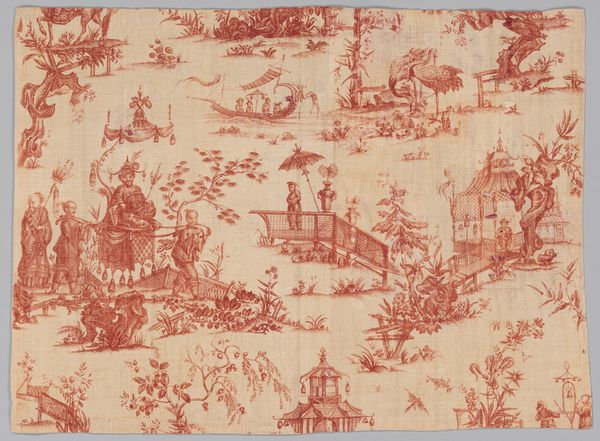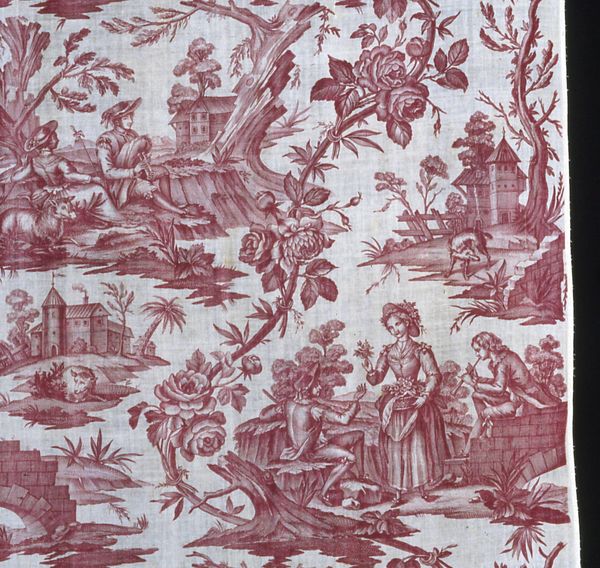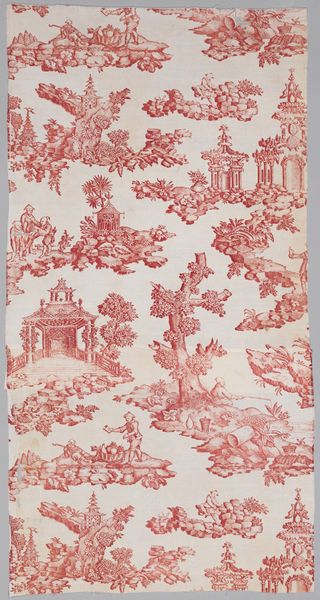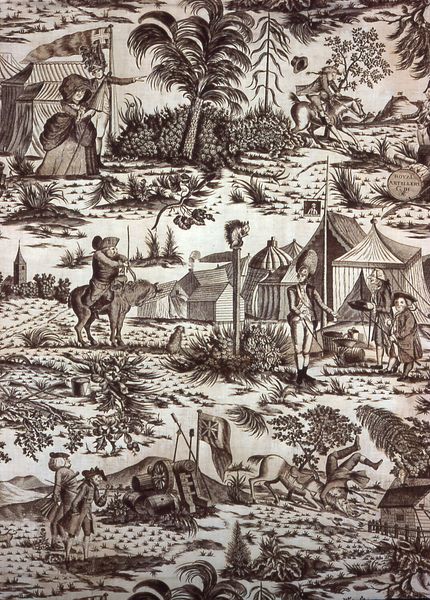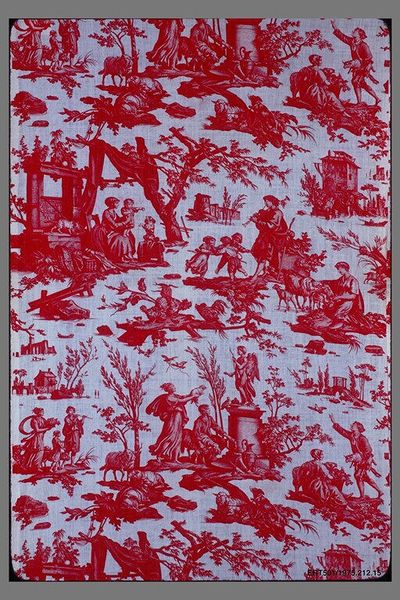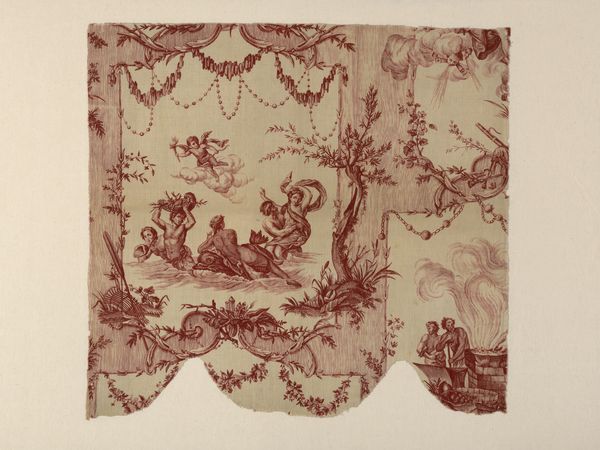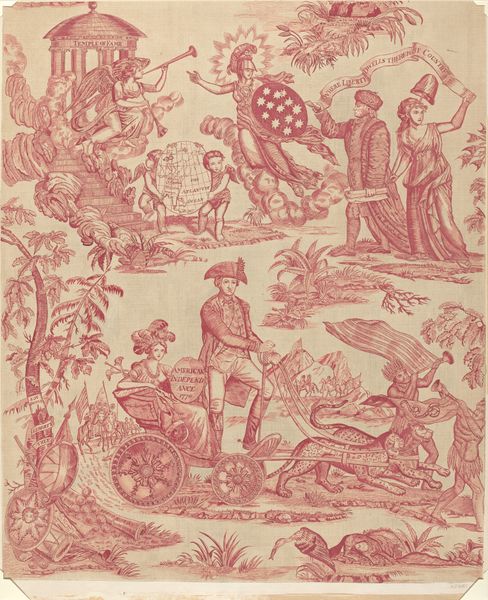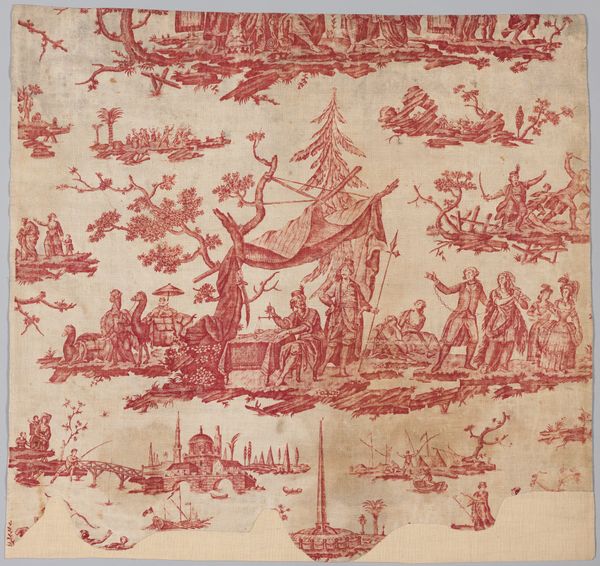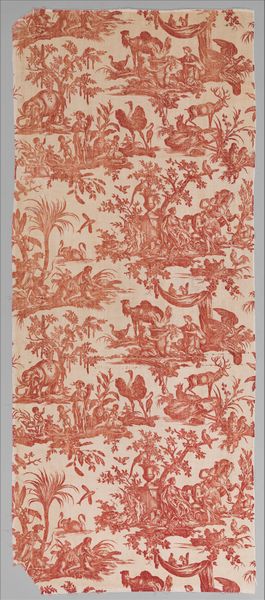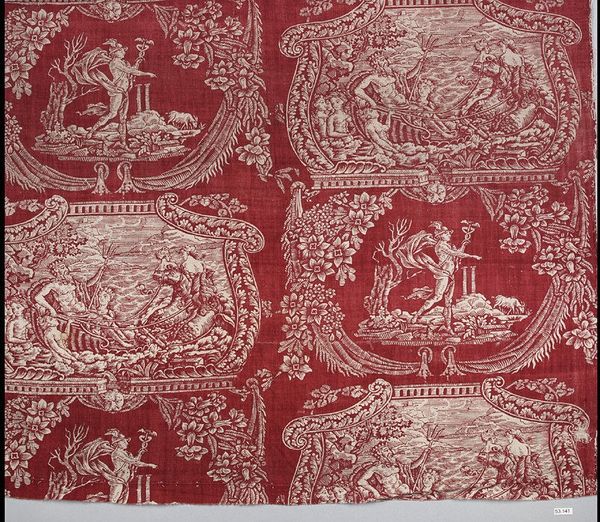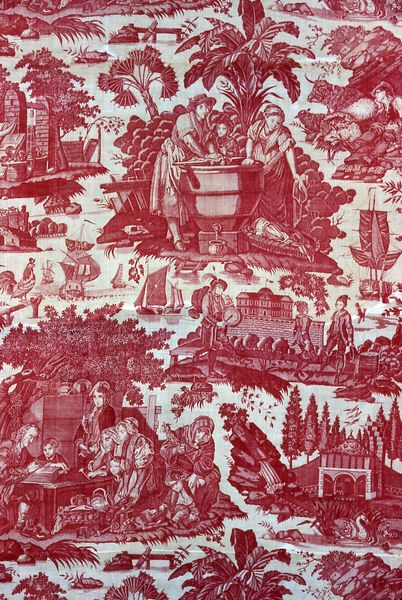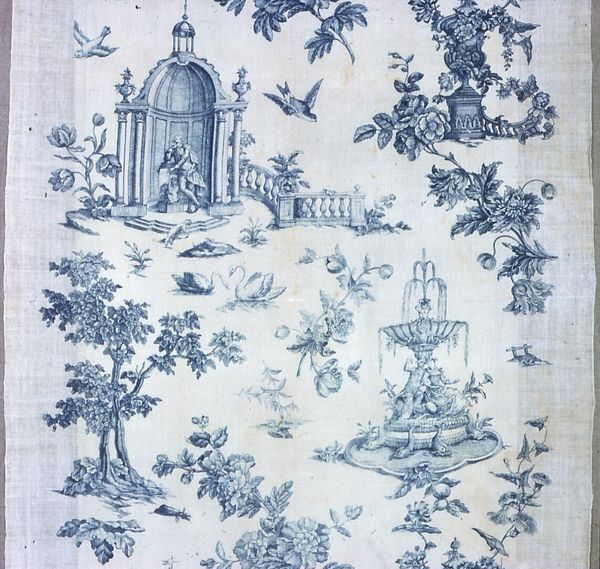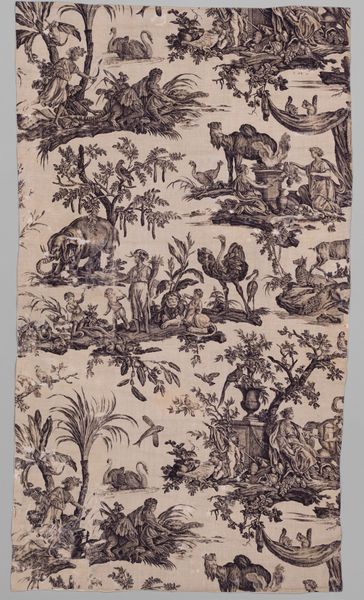
Dimensions: 180.3 × 154.9 cm (71 × 61 in.)
Copyright: Public Domain
Curator: At the Art Institute of Chicago we have "Le Mouton Chéri," a furnishing fabric originating around 1785, created by Petitpierre Frères & Cie. It exemplifies Rococo style. Editor: My immediate sense is one of playful elegance, almost a staged pastoral scene repeated across the fabric. The monochrome—that red ochre against the cream ground—establishes a strong visual rhythm. Curator: Precisely. The idyllic scenes depict rural life—shepherds tending flocks, families gathered near quaint cottages, lovers in embraces—reflecting the era's romanticized view of nature and simplicity. The imagery speaks volumes about the cultural aspirations of the period. Editor: Yes, and note how each vignette, framed by stylized foliage and architectural elements, operates as a kind of miniature painting. The artists clearly understood principles of composition, carefully arranging figures and objects to guide the eye. There’s also a skillful manipulation of scale within each framed section, lending depth despite the two-dimensionality. Curator: The repetition of these scenes is indeed intentional, conveying a sense of abundance and leisurely continuity, ideals greatly cherished at the time. However, there's also a subtly coded language—the shepherdesses, for instance, represent not just rustic charm but idealized femininity. It creates this cultural memory of innocence and natural virtue. Editor: True, though for me, what’s also striking is the meticulous detail achieved through what seems to be engraving techniques applied to textile production. That crispness of line, the delicate rendering of shadow, and the very controlled use of the limited color palette – it's incredibly refined and it is really pleasing aesthetically. Curator: Absolutely. “Le Mouton Chéri" served not merely as ornamentation but as a cultural text, reflecting and reinforcing the social and aesthetic values of its time, especially regarding idealised domestic life. Editor: I’m left considering how its seemingly lighthearted scenes subtly encode hierarchies and notions of beauty – the artifice within this artful furnishing fabric. Curator: For me, it’s the continuity—how these scenes resonate across time, carrying with them fragments of the past.
Comments
No comments
Be the first to comment and join the conversation on the ultimate creative platform.
